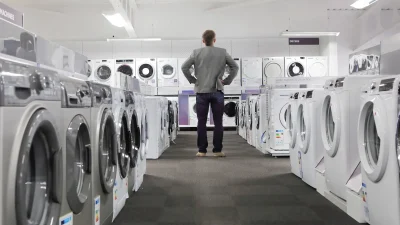
In the not-so-distant past, the idea of controlling your home’s lights, temperature, security, and appliances from a single device seemed like science fiction. However, thanks to rapid advancements in technology, this futuristic vision has become a reality. Smart homes have transformed the way we interact with our living spaces, enhancing convenience, energy efficiency, and security.
One of the pivotal components driving this transformation is sensor technology. Sensors play a crucial role in making our homes smarter, more responsive, and more energy-efficient. In this article, we’ll delve into the world of sensors, exploring their diverse applications and the impact they have on smart environments. We’ll also take a closer look at key players in the sensor industry, including Veris Sensors, Schneider Electric Sensors, and Mamac Sensors.
Understanding Sensor Technology
Before we dive into specific sensor technologies and their applications, let’s establish a foundational understanding of what sensors are and why they are so integral to smart environments.
What Are Sensors?
At their core, sensors are devices that detect and respond to changes in their environment. They are the “sensory organs” of smart systems, gathering data from the physical world and translating it into actionable information. Sensors come in various forms, each designed for specific purposes and capable of detecting specific types of stimuli.
Types of Sensors
The world of sensors is remarkably diverse, with countless sensor types catering to a wide range of applications. These sensors can be categorized based on the type of stimuli they detect:
- Environmental Sensors: These sensors measure various environmental factors such as temperature, humidity, air quality, and light levels. They are commonly used in climate control systems and home automation.
- Motion Sensors: Motion detectors are essential for security systems, automatically triggering alarms or lights when movement is detected.
- Proximity Sensors: These sensors detect the presence or absence of an object within a certain range, commonly found in touchless faucets, automatic doors, and smartphone screens.
- Image and Video Sensors: Cameras and image sensors capture visual information, enabling security cameras, facial recognition systems, and more.
- Biometric Sensors: Biometric sensors, such as fingerprint scanners and iris scanners, identify individuals based on unique biological characteristics.
Role of Sensors in Smart Environments
Sensors are the linchpin of smart environments, providing the data needed for intelligent decision-making and automation. Their roles within smart environments are manifold:
- Enabling Automation and Control: Sensors are the eyes and ears of automated systems. They detect changes in the environment and trigger corresponding actions, such as adjusting thermostats, turning on lights, or locking doors.
- Enhancing Energy Efficiency: Environmental sensors play a critical role in optimizing energy usage within homes. For example, they can detect when a room is unoccupied and adjust heating or cooling accordingly, leading to significant energy savings.
- Improving Safety and Security: Motion sensors, door/window sensors, and security cameras bolster home security by detecting unauthorized entry or suspicious activity.
Exploring Key Sensor Players
As the demand for sensor technology continues to grow, several companies have emerged as leaders in the field, offering innovative solutions that drive the evolution of smart environments. Let’s take a closer look at three prominent players: Veris Sensors, Schneider Electric Sensors, and Mamac Sensors.
Veris Sensors
Introduction to Veris Sensors
Veris Technologies is a well-established player in the sensor industry, known for its commitment to precision and reliability. Veris sensors are widely used in various applications, including building automation, energy management, and HVAC systems.
Veris Sensor Applications
Veris sensors excel in HVAC (Heating, Ventilation, and Air Conditioning) systems, where precise measurements of temperature, humidity, and air quality are essential. They ensure that climate control systems operate optimally, delivering comfort and energy efficiency.
Advantages and Benefits of Veris Sensors
Veris sensors are valued for their precision and accuracy. Their integration capabilities allow them to seamlessly connect with other building automation systems, providing a holistic approach to smart building management. Moreover, Veris is committed to sustainability, developing sensors that contribute to greener, more energy-efficient buildings.
Schneider Electric Sensors in Smart Environments
Schneider Electric is a global leader in energy management and automation solutions. Their extensive portfolio includes a wide range of sensors designed to enhance smart environments across various industries.
Applications of Schneider Electric Sensors
Schneider Electric sensors find applications in building management systems, industrial automation, and smart grid solutions. They play a pivotal role in monitoring and controlling critical parameters to ensure efficiency and sustainability.
Advantages and Innovations Offered by Schneider Electric Sensors
Schneider Electric sensors stand out for their scalability and flexibility. They can be seamlessly integrated into existing systems, making them an ideal choice for both retrofitting and new installations. Their connectivity and interoperability enable seamless communication between devices and systems, facilitating comprehensive smart environment management.
Mamac Sensors: Advancing Smart Environments
Mamac Systems is a key player in sensor technology, specializing in high-performance sensors designed for challenging environments. Their sensors are trusted in applications such as environmental monitoring, process control, and IoT (Internet of Things) connectivity.
Key Applications of Mamac Sensors
Mamac sensors shine in demanding environments where precision and durability are paramount. They are commonly used in environmental monitoring systems, ensuring accurate data collection in critical situations. Additionally, Mamac sensors play a crucial role in process control, contributing to the efficiency and safety of industrial processes.
Unique Features and Benefits of Mamac Sensors
Mamac sensors are known for their high performance and reliability. They offer customization options, allowing users to tailor sensors to their specific needs. Remote monitoring capabilities enable real-time data access, essential for applications that require timely responses.
Case Studies: Real-World Applications
To appreciate the impact of sensor technology on smart environments, let’s explore some real-world examples of how sensors are transforming different spaces.
Smart Homes
In the realm of smart homes, sensors are ubiquitous. Environmental sensors regulate temperature and humidity, motion sensors trigger lighting and security systems, and smart cameras enhance both security and convenience. For example, when a motion sensor detects movement at the front door, it can trigger smart lighting to illuminate the path.
Smart Offices and Commercial Spaces
In commercial buildings, Schneider Electric sensors are widely used to optimize HVAC systems. Sensors can detect occupancy in office spaces and adjust temperature and lighting accordingly, contributing to energy savings. Additionally, environmental sensors help maintain air quality and comfort in shared workspaces.
Smart Cities
In the context of smart cities, sensor networks collect data on traffic flow, air quality, waste management, and more. This information enables city planners to make data-driven decisions for improving urban living conditions, sustainability, and efficiency.
Industry and Manufacturing
In industrial settings, Mamac sensors are invaluable for process control. They monitor variables such as pressure, temperature, and flow rate, ensuring that industrial processes run smoothly and safely. Additionally, sensors play a pivotal role in predictive maintenance, reducing downtime and enhancing productivity.
Future Trends and Innovations in Sensor Technology
The field of sensor technology continues to evolve rapidly, with several exciting trends and innovations on the horizon:
IoT Integration
The integration of sensors into the Internet of Things (IoT) ecosystem is set to expand. This will enable seamless communication between devices, creating a unified and responsive network of interconnected smart devices.
AI and Machine Learning
Sensors will increasingly leverage AI and machine learning algorithms to make sense of vast datasets. This will enable more sophisticated decision-making and predictive capabilities, further enhancing smart environments.
Sustainability and Environmental Impact
Sustainability will remain a central theme in sensor technology. Sensors will play a crucial role in monitoring and optimizing resource usage, contributing to a greener and more sustainable future.
Challenges and Considerations
While sensor technology holds immense promise, it also presents challenges and considerations:
Data Privacy and Security
As sensors collect a wealth of data, ensuring data privacy and security becomes paramount. Protecting sensitive information from unauthorized access and breaches is a constant concern.
Standardization and Interoperability
With the proliferation of sensors, achieving standardization and interoperability between devices from different manufacturers can be challenging. Industry-wide standards and protocols are essential to ensure seamless integration.
Ethical Implications of Sensor Technology
As sensors become more prevalent, ethical questions may arise regarding data collection, surveillance, and the potential for misuse. Addressing these concerns will be essential in shaping the responsible deployment of sensor technology.
Conclusion
The journey from smart homes to smart environments is powered by sensor technology. Sensors are the eyes, ears, and even the conscience of our connected world, enabling automation, enhancing efficiency, and improving the quality of our lives. As we continue to explore the possibilities of sensor technology, it’s important to recognize the contributions of industry leaders like Veris Sensors, Schneider Electric Sensors, and Mamac Sensors in shaping a smarter and more sustainable future for us all.








